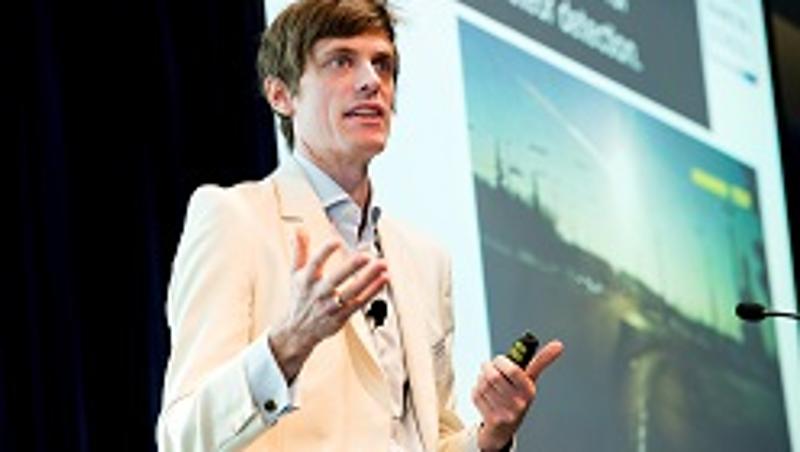
Robots will fundamentally change the shape of the workforce in the next decade but many industries will still need a human touch, a QUT Future of Work Conference has heard.
Renowned University of Oxford Associate Professor in Machine Learning Michael Osborne addressed the conference, part of QUT's Real World Futures series, at QUT's Gardens Point campus.
Professor Osborne co-authored a ground-breaking study that predicted 47 per cent of jobs in the US could be overtaken by computers in the next decade or two.
"Machine learning is the study of algorithms that can learn and act, and algorithms are increasingly a cheaper alternative to human work," Professor Osborne said.
"They are replacing some of the most quintessential human activities."
Professor Osborne said the idea of technology taking jobs was not new, pointing to the change in the agricultural workforce in the US as an example. In 1900, 40 per cent of US workers were farmers and by 1999 it was 2 per cent, with little change in the country's unemployment rate.
The research found jobs highly susceptible to automation included data entry keyers, referees and umpires and even waiters and waitresses. More secure roles included members of the clergy, choreographers and funeral attendants.
Professor Osborne also said the transport and mining industries were likely to be heavily automated in the future.
"The first fully autonomous mine site according to our best estimates today is probably only about 10 years away," he said.
But three key "bottlenecks to automation" - creativity, social intelligence and perception - would ensure humans were still needed.
"What unites those bottlenecks is the fact that humans possess a very deep reservoir of tacit human knowledge about the society and culture we find ourselves in," Professor Osborne said.
"For example, for creative let's say we're trying to write a hit song. It's relatively easy to design an algorithm that is able to churn out songs ad infinitum, but it's very difficult to teach that algorithm the difference between a good song and a bad song.
"Because as humans, we draw on an enormous variety of cultural cues from over our lifetime and it's difficult for us to get that into code."
Professor Osborne said the "most alarming" aspect of the study found those earning higher salaries and those holding at least a bachelor degree were the least likely to be affected by job automation.
"Simply put the more skilled you are, the more secure you are from automation," he said.
"To me this was probably the most alarming finding in our study because it suggests that the people least well equipped to move into new forms of employment are those who are going to feel the burden of automation resting most heavily upon their shoulders.
"It really does raise some concerns that questions of inequality we are already tackling are likely to worsen."
The future workforce would create new jobs and industries, for example wind energy engineers and nanotechnology engineers, but it was hard to predict how many.
"Only 5 per cent of the US workforce is employed in industries created in the 21st Century," Professor Osborne said.
"But you would have been hard pressed to find someone who would have been able to predict back in the year 2000 that Zumba instructors would have been one of the fastest growing occupations in 2014. It's very difficult over a 10 year horizon to predict what the new jobs will be.
"We as a society are not short of challenges to tackle in the 21st century and those challenges are very much going to demand human skills, human hands, human intelligence, human empathy, all things that are not going to be readily replaced by machines."
Professor Osborne said the arrival of big data was "fundamentally transformational for society", allowing the development of innovations like Google translate or self-driving cars which were previously considered skills that required human involvement.
"We are seeing information on a scale which we have never seen in the past," he said.
"Algorithms will be far safer and far more effective drivers than humans could ever be, for example."
But it was important to "distinguish between what we can and can't expect" from robots.
"For a long time people have been forecasting that something like Daisy the robotic housemaid was just around the corner but actually I think that's very far from the truth," he said.
"Reproducing the full faculty of human fingers and human eyes is still a long way away."
QUT's Real World Futures series this year will explore the future of thinking, working and living.
Media contact:
Rob Kidd, QUT Media, 07 3138 1841, rj.kidd@qut.edu.au
After hours, Rose Trapnell, 0407 585 901




